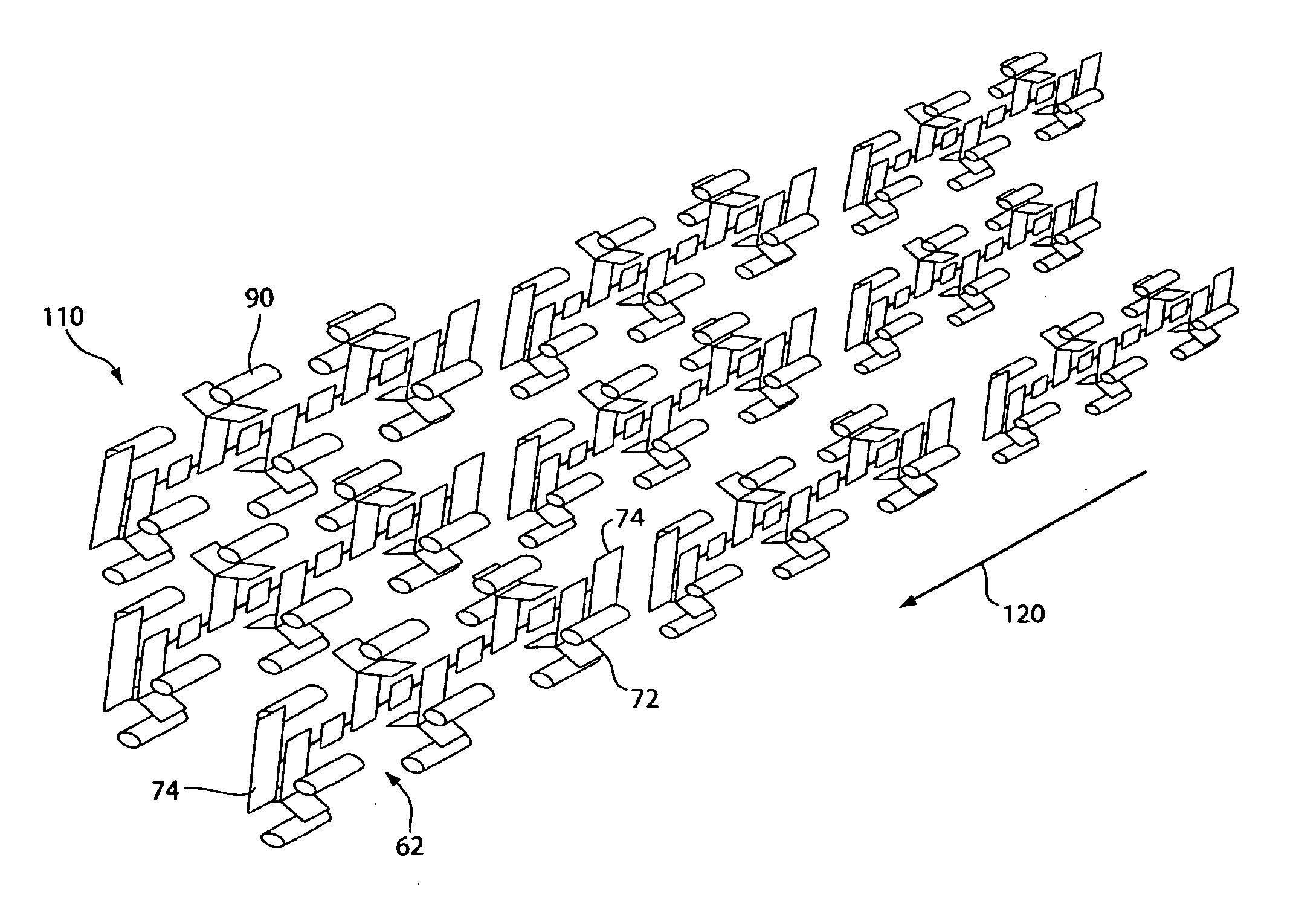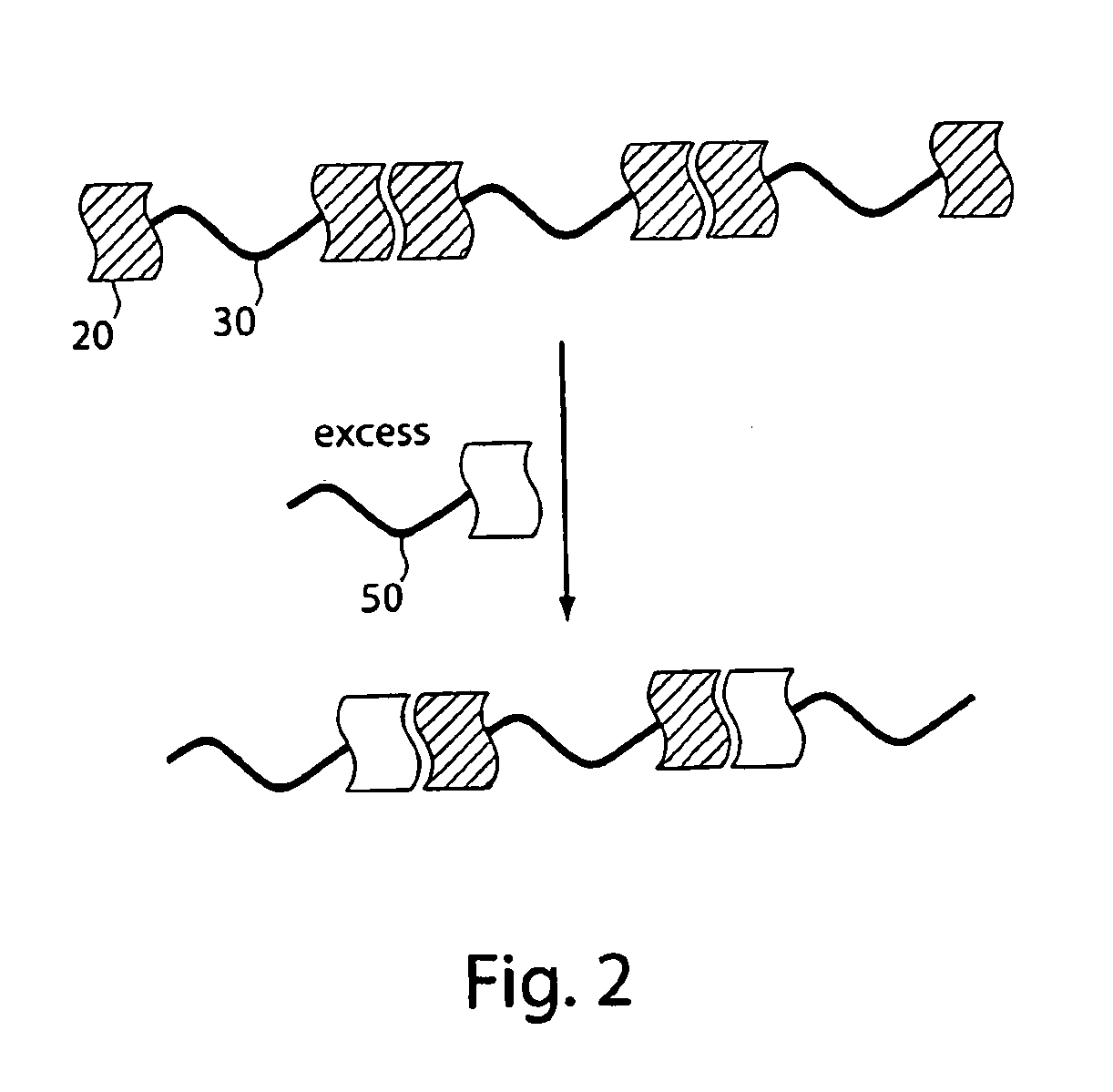Compositions including polymers aligned via interchain interactions
a technology of interchain interaction and polymer, which is applied in the direction of liquid crystal compositions, instruments, chemistry apparatus and processes, etc., can solve the problem of slow “off” event, and achieve the effect of greater dichroic ratio, greater chain length, and infinite length
- Summary
- Abstract
- Description
- Claims
- Application Information
AI Technical Summary
Benefits of technology
Problems solved by technology
Method used
Image
Examples
example 1
[0086]To investigate the affect of the formation of extended polymeric networks on the alignment of polymers, a series of polymers were synthesized. Polymers containing interacting groups at the terminal ends of the polymer and essentially identical polymers lacking the interacting groups were synthesized, for suitable comparison. Compound 2 was synthesized as an endcapping, hydrogen-bonding, interacting group in a 4-step reaction adapted from literature procedures, in 39% isolated yield, as shown in FIG. 4 (see Hirschberg, J. H. K. K.; Beijer, F. H.; Van Aert, H. A.; Magusin, P. C, M. M.; Sijbesma, R. P.; Meijer, E. W. Macromolecules 1999, 32, 2696, for example). The triptycene compounds were synthesized according to procedures described in, for example, Zhu, Z. Z.; Swager, T. M. J. Am. Chem. Soc. 2002, 124, 9670.
[0087]As shown in FIG. 5A, endcapped polymers were synthesized by first reacting diethynyltriptycene (1 eq) and di-2,5-(2-ethylhexyl)-1,6-diiodobenzene (1 eq) under pallad...
example 2
[0088]The dimerization of compound 1 was studied with NMR spectroscopy. The monomer and dimer were observed to exchanged slowly on the NMR timescale, and distinct signals were observed for both species, thereby allowing a dimerization constant to be determined by integration. In pure chloroform, the monomer concentration remained below the NMR detection limit. However, by employing hydrogen bonding co-solvent mixture (e.g., CDCl3 with DMSO-d6 or MeOD), the dimerization constants could be measured and Kdim could be estimated by extrapolation to 0% co-solvent. FIG. 6 shows the plot of log Kdim of compound 1 as a function of solvent composition for CDCl3 mixtures of (a) MeOD and (b) DMSO-d6. The results indicated that the lower limit for the dimerization constant is about 106.
example 3
[0089]The optical properties of polymer P2b was then studied. Polymer P2b, which contains endcapping moieties, was dissolved in either chloroform or a mixed with 5-cyanobiphenyl (5CB) in a liquid crystal cell, and the optical characteristics of the polymer were observed. FIG. 7 shows the (a) normalized absorption spectra of polymer P2b in chloroform solution, and the polarized absorption of polymer P2b in the liquid crystal cell with (b) parallel and (c) perpendicular polarizer, with respect to the liquid crystal director. The absorption spectra exhibited a characteristic peak at 385 nm for chloroform solutions of the polymers. Upon combining the polymer with 5CB and transferring the mixture to a parallel rubbed liquid crystal cell, the absorption maximum of the polymer shifted to 407 nm, indicating an increased conjugation length of the polymer.
PUM
| Property | Measurement | Unit |
|---|---|---|
| dichroic ratio | aaaaa | aaaaa |
| non-covalent | aaaaa | aaaaa |
| covalent | aaaaa | aaaaa |
Abstract
Description
Claims
Application Information
 Login to View More
Login to View More - R&D
- Intellectual Property
- Life Sciences
- Materials
- Tech Scout
- Unparalleled Data Quality
- Higher Quality Content
- 60% Fewer Hallucinations
Browse by: Latest US Patents, China's latest patents, Technical Efficacy Thesaurus, Application Domain, Technology Topic, Popular Technical Reports.
© 2025 PatSnap. All rights reserved.Legal|Privacy policy|Modern Slavery Act Transparency Statement|Sitemap|About US| Contact US: help@patsnap.com



